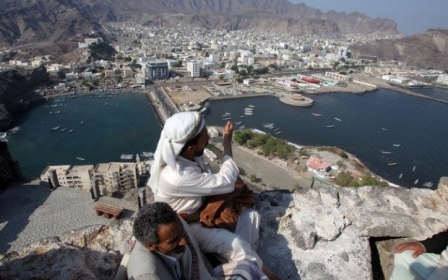Yemen: Another civil war

The last American troops have been pulled out of Yemen after al-Qaeda fighters stormed a city near their base last Friday. Houthi rebels who had already overrun most of the country have now entered Aden, the last stronghold of President Abdrabbuh Mansour Hadi. And on Wednesday Hadi boarded a helicopter and departed for parts unknown.
The US State Department spokesman put the best possible face on the withdrawal of American troops, saying that “due to the deteriorating security situation in Yemen, the US government has temporarily relocated its remaining personnel out of Yemen.” He even said that the US continued to support the “political transition” in Yemen. But there is no “political transition.” There is a four-sided civil war (although one side is about to collapse).
Why would anybody be surprised? There has been no 25-year period since the 7th century AD when there was not a civil war of one sort or another in Yemen. (They are often many-sided wars, and the impression that it was less turbulent before the 7th century may just be due to poor record-keeping.) But this time it’s actually frightening the neighbours.
Yemen’s current turmoil started in 2011, when the dictator who had ruled the country for 33 years, President Ali Abdullah Saleh, was forced out by non-violent democratic protesters (and some tribal militias who backed them). Saleh’s deputy, Abdrabbuh Mansour Hadi, took over and even won an election in 2012, but he never managed to establish his authority over the deeply divided country.
Hadi had the backing of the United States and most of the Arab Gulf states (including Yemen’s big northern neighbour, Saudi Arabia) because he was willing to fight the Islamist extremists who had seized much of southern and eastern Yemen. But his main preoccupation was actually the Houthis, a tribal militia based in largely Shiite northern Yemen.
Angry at the status that the north was being offered in a proposed new federal constitution, the Houthis came south in force and seized Sanaa last September. In February, after months of house arrest, Hadi fled to the southern port of Aden, his home town and Yemen’s second city, and declared that the capital instead. So the Houthis came south after him.
Meanwhile Saleh, the former president, returned from exile and made an alliance with the Houthis – despite the fact that he had launched six major offensives against them back when he was president. That’s what radicalised the Houthis in the first place, but they needed some national figure on their side as they moved deeper into the south, and Saleh is at least a Shiite. He will have to do. Clear so far? Good.
The third contender for power is al-Qaeda in the Arabian Peninsula (AQAP), whose forces are only a half-hour’s drive from Aden. As its fighters closed in on Aden last week, AQAP seized the town next to the airbase where the American forces were living, and Washington ordered its troops out. But the Houthis got into the city of Aden first, and it is not yet clear whether AQAP will try to take it from them.
Finally, we mustn’t forget the fighters of ISIS (Islamic State), who announced their presence in the country last month. Their sole operation of note so far has been suicide attacks on two Shiite mosques in Sanaa on Sunday that killed 137 people. But as Sunni fanatics in a country that is currently being overrun by its Shiite minority, ISIS will not lack for recruits. So the war will continue with three sides: Hadi goes out, and ISIS comes in.
In conventional terms, Yemen doesn’t matter much. It has a lot of people (25 million), but it is the poorest country in the Arab world. Its oil has almost run out, and its water is going fast. You could argue that its geographical position is “strategic” – at the entrance to the Red Sea, commanding the approach to the Suez Canal – but it’s hard to see any Yemeni government getting the kind of military forces it would need to close that waterway.
What worries people is the possibility that the jihadis (either al-Qaeda or ISIS) could come out of this on top. They are certainly not there yet, but many Sunnis will see them as the best chance to break the hold of the Shiites who, despite their internal quarrels, have collectively dominated the country for so long. In fact, al-Qaeda and ISIS are now the last organised Sunni forces facing the Houthis.
Shiites are only one-third of Yemen’s population and the resentment runs deep. The Houthi troops now occupy almost three-quarters of the country’s densely populated areas, but it would be an exaggeration to say that they actually control all that territory. They are spread very thinly, and if they start to lose they could be rolled up very quickly by the jihadis.
That could turn Yemen into a terrorist-ruled “Islamic State” with five times the population of the one that sprang into existence last July on both sides of the Syrian-Iraqi border. The odds are against it, but after that “July surprise” nobody is ruling it out.
- Gwynne Dyer is an independent journalist whose articles are published in 45 countries.
The views expressed in this article belong to the author and do not necessarily reflect the editorial policy of Middle East Eye.
Photo: With a population of 25 million, Yemen is the poorest country in the Arab World (AFP)
Stay informed with MEE's newsletters
Sign up to get the latest alerts, insights and analysis, starting with Turkey Unpacked
Middle East Eye delivers independent and unrivalled coverage and analysis of the Middle East, North Africa and beyond. To learn more about republishing this content and the associated fees, please fill out this form. More about MEE can be found here.





